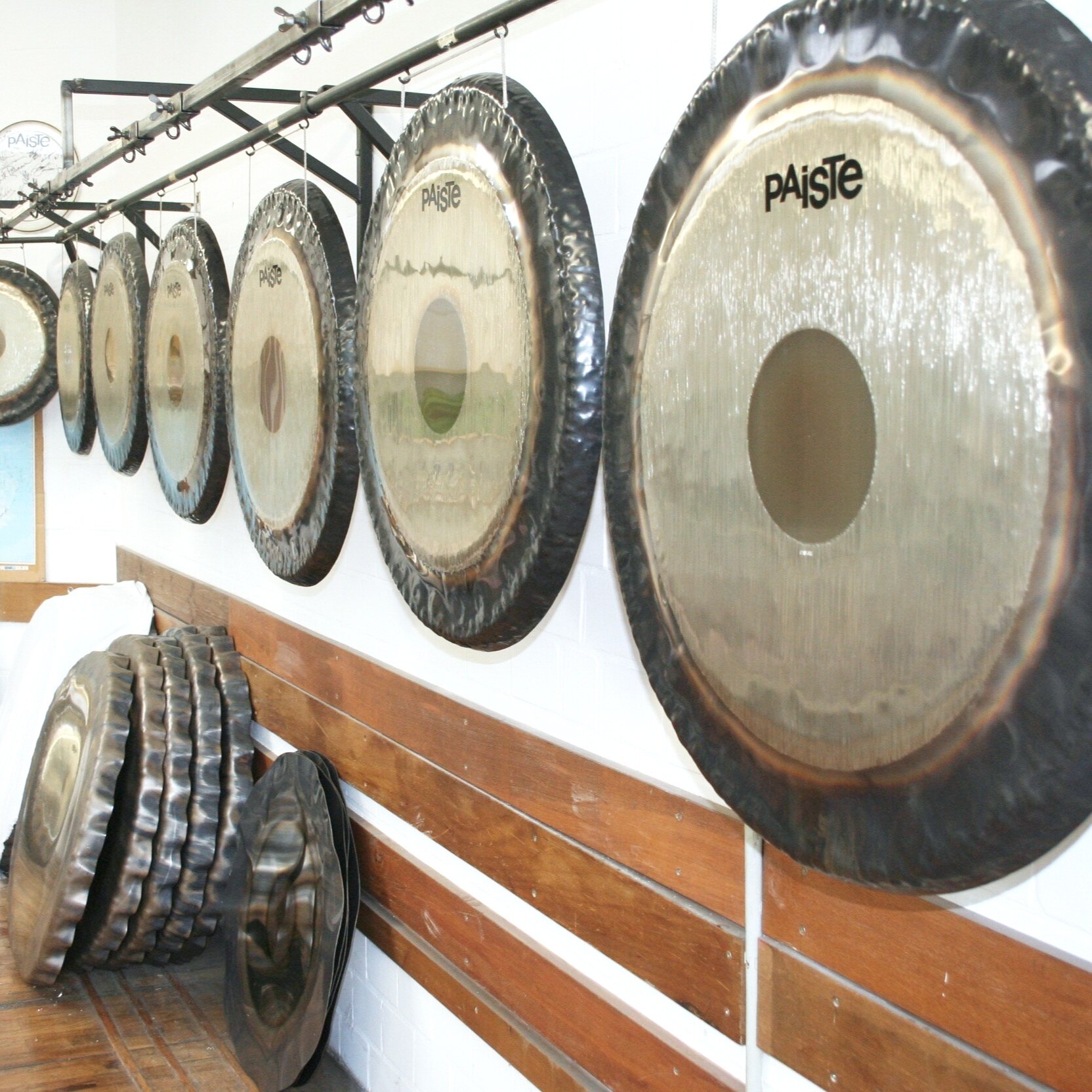paiste
DOMINATING sound HISTORY - one gong at a time
Paiste (pronounced Pie-stee) have been making gongs since the 1940s at their factory in Schacht-Audorf in north Germany. They are extensively used in British and European orchestras as well as by rock groups. They are particularly favoured by sound therapists due to the high quality workmanship and the purity of the metals used in their alloys. Paiste have extensive knowledge of the properties of alloys and production techniques for making the sheets of metal from which the gongs are made. Paiste produce or have produced several different ranges of gongs and tam-tams. They are made from a brass known as nickel silver to a formula of 63% copper, 25% zinc and 12% nickel.
symphonic gongs
Their main range consists of the Symphonic Gong (tam-tam) in diameters from 20”/50cm up to 40”/100cm plus 60”/152cm and the World’s largest commercially produced gong at 80”/203cm! These gongs are characterised by their sustained loud crash, full of harmonics and frequencies, and their quiet booming fundamental notes, especially in the larger sizes.
planet gongs
In the 1980s, Paiste in conjunction with Jens Zygar started to develop a range of Planet Gongs aimed at sound healing and meditation practitioners. In appearance they look just like Symphonic Gongs, but when they are played they have a much stronger fundamental tone. This fundamental tone is tuned to a specific pitch based on a natural harmonic series derived from the orbital properties of the Sun, Moon, Earth and other planets and planetoids in our Solar System. These frequencies were calculated by the Swiss mathematician Hans Cousto and explained in his book The Cosmic Octave – the Origin of Harmony
The gongs themselves are actually tuned an octave below Cousto’s frequencies. In reality, the tuning is not that stable and is rapidly lost, especially by overplaying.
sound creation gongs
The Sound Creation Gong range was developed during the 1970’s and early 1980’s. Initially, a set of ten ‘proto’ or prototype gongs were created as a result of these early experiments. These prototypes were then presented to various audiences in seminars, music schools etc who then filled in questionnaires asking them to describe a representation of the sound. The gongs were then marketed according to the groupings of these sounds and other esoteric feelings, using descriptions like ‘Sun’, ‘Moon’, ‘Fire’ etc. The original range consisted of ten gongs (plus four versions of the No. 3 ‘Earth’ gong). At the present time, only the four ‘Earth’ gongs plus the Nos. 8, 9 and 10 ‘Chakra’ gongs are available.
TUNED GONGS
Paiste also used to produce a ranged of tuned or bossed gongs. The range was spread over four-and-a-half octaves ranging from C2 to F6 and diameters from 36″/91cm down to 6″/15cm. The tuning was to either 440 or 442Hz A. Each gong had a specific fundamental note, very bell-like but had a tendency to ‘splash’ when played above forte. The range is no longer available due to the limited repertoire for tuned gongs in orchestral works and the availability of cheaper tuned gongs from South East Asia.

